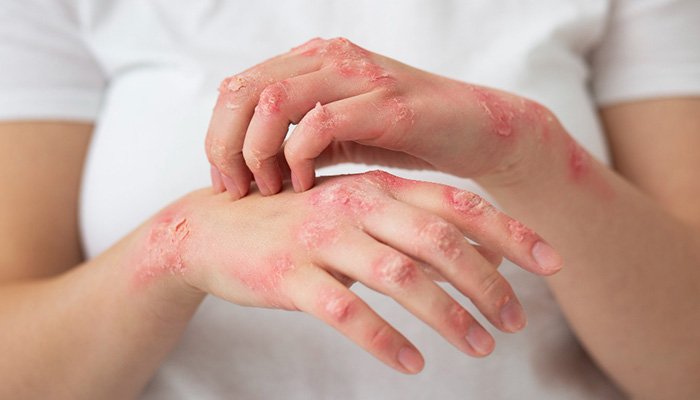Angie noticed a small round tender lump in her genital area, when taking a shower. She ignored it however, over the next few days, the lump became more painful. She experienced pain even on walking. She was embarrassed to visit the doctor with her problem. Coaxed by her friends, she went to the physician, who examined her and told her that she had Bartholin’s gland cyst. The condition was treatable, but she would not have to suffer so much pain, had she come early.
Basics of female reproductive organs
Vulva is the female external reproductive organs consisting of vagina, labia minora, labia majora, clitoris and bartholin’s glands.
Vagina is the opening in females situated in between the urethra (the opening through which urine exits) and the anus (the end of large intestine through which body wastes are excreted). Vagina is connected to the lower part of womb, called cervix through a tube made up of muscles and lined with membranes of mucus. Vagina allows sexual intercourse in women and functions as a passage for the menstrual blood to flow out of the body.
The smaller inside pair of lips of the vulva are termed as labia minora. The larger outside pair of lips of the vulva are called as labia majora. The erectile and cylindrical organ located at the upper portion of the vulva above vagina is called clitoris.
Bartholin’s glands are a pair of small glands measuring 0.5 cm in diameter located on either side below the vagina inside the folds of labia minora. These are not visible or cannot be felt when they are normal. These glands secrete mucus into2.5 cm long tubes called bartholin’s tubes which open into on either sides of the vaginal orifice. This mucus keeps the vagina moist.
Bartholin’s gland cysts
Obstruction of the Bartholin’s tubes may cause the fluid to back up in the glands causing the glands to swell which is called Bartholin cyst. Bartholin’s cysts are painless and usually not infected. However, sometimes the fluid in the Bartholin’s cyst may become infected and pus builds up in the surrounding tissue which is called abscess. Most of the abscessed Bartholin’s cysts are infected by bacteria of the skin, and sometimes can be infected by bacteria that are sexually transmitted.
Symptoms
When you have Bartholin’s cyst, you may observe a small painless bulge on one of the vaginal lips. This bulge or cyst can remain same in size or grow. When Bartholin’s cyst becomes infected and forms abscess, you may observe the following signs and symptoms.
- The cyst can be tender and or painful
- You may feel uncomfortable to walk or sit
- You may feel pain during sexual intercourse
- Your may have fever
You doctor can check for these symptoms and decide whether the Bartholin’s cyst has become infected or not.
Treatment
The treatment of Bartholin’s cyst depends on the size of the cyst, the discomfort the cyst causes and also depends on whether the cyst has turned into an abscess or infected.
The physician may tell you to take sitz bath. Sitz bath is taken by soaking the affected area every day for 3 or 4 days in a tub filled with little amount of warm water. This would cause the cyst to rupture and drain out on its own.
When the cyst is large or infected, it can be drained through surgery which is done in doctor’s clinic either under local anesthesia (giving medicine near the area of the cyst so that the area becomes numb and you do not feel any pain) or under general anesthesia (giving medicine so that you become temporarily unconscious and become un aware of the procedure and pain). During this procedure, the doctor makes a small incision to the cyst so that the contents drain, out and places a small rubber tube (catheter) in the incision. The catheter is placed for up to six weeks and does not allow the incision to be closed allowing complete drainage. Subsequently, the catheter is removed or may fall out on its own.
Your doctor may prescribe antibiotics if the abscess is due to sexually transmitted disease to eradicate the infection causing organisms. Antibiotics are not necessary, if the pus drains out of the infected cyst.
Depending on the complexity of the cyst, a procedure called marsupialization may be done either in doctor’s clinic or in the operation room. The procedure is similar to surgical drainage but in this procedure the doctor places stitches on both sides of the incision to create a permanent opening for drainage. A catheter may also be placed for draining for few days and to avoid recurrence of abscess. This procedure is not recommended when the infection is active and as such your doctor may drain the cyst first, get rid of the infection, and then perform marsupialization mainly for recurrent cysts.
If any of the above procedures are not effective and if the cysts recur, then your doctor may opt to remove the Bartholin’s glands permanently under general anesthesia.
Recurrence
There is a possibility for the Bartholin’s cysts to recur which happens in about 10% of women. If they occur, they can be treated or surgically removed.
Prevention
Bartholin’s gland cysts cannot be prevented. But maintaining safe sex such as use of condoms and personal hygiene can prevent infection of cysts and abscess.
Outlook
When Bartholin’s cysts are infected they can form abscesses that can cause discomfort while walking or sitting, pain during sexual intercourse and, occasionally, fever. Although Bartholin’s gland cysts and abscesses cannot be prevented, they can be treated through Sitz baths, surgical drainage, antibiotics, marsupialization, surgical removal of Bartholin’s glands and laser therapy.



